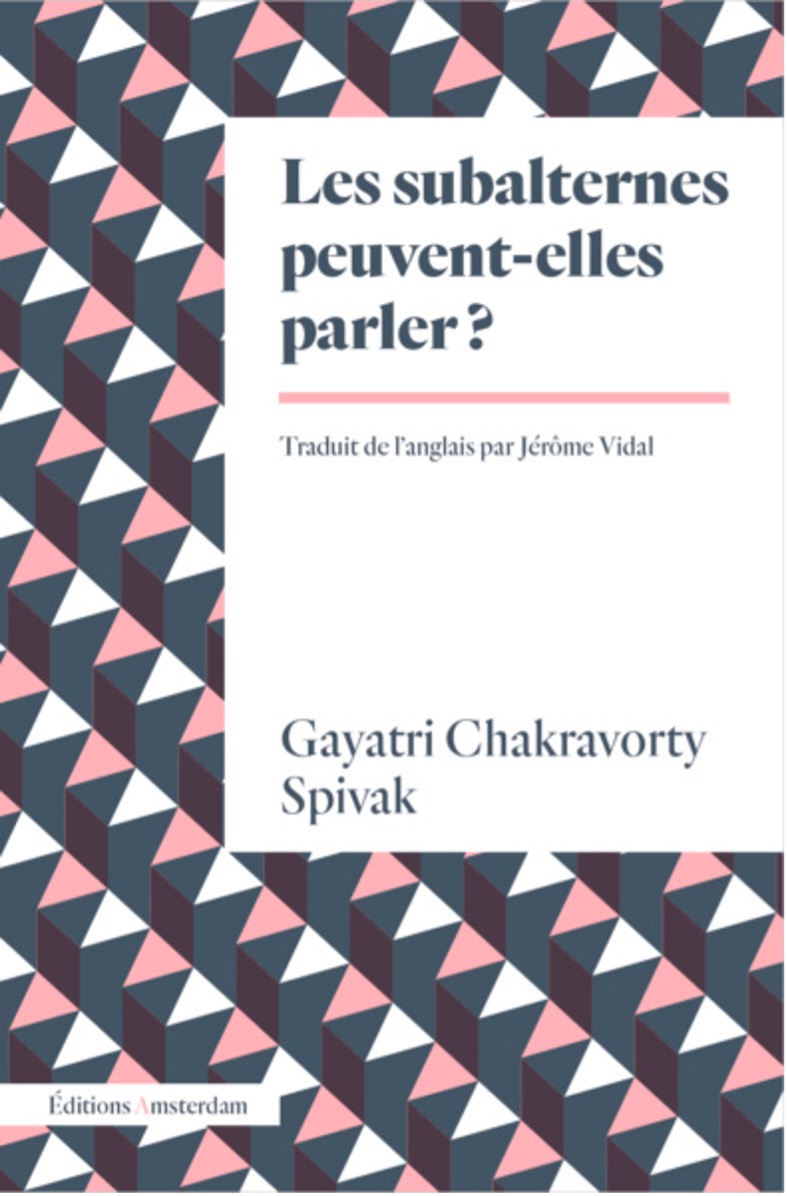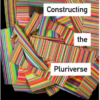This text is licensed under the Creative Commons license Attribution-NonCommercial-ShareAlike 4.0 International. The link to the original material is situated at the top right of the text.

Can the Subaltern Speak?
Gayatri Chakravorty Spivak
1988
Keywords: subaltern, inquiry, positionality, case study, narrative, failure
Threads: Inquiring, Remembering
Short description
The text address two articulated questions: “Can the subaltern speak? What must the elite do to watch out for the continuing construction of the subaltern?” (p. 294).
1. The response to the first question is “no”.
No, because there is no such thing as “the subaltern” as a group: “the colonized subaltern subject is irretrievably heterogeneous” (284), as opposed to the “self-knowing, politically canny subalterns” (275) usually imagined by “intellectuals”.
And no, because the subalterns are spoken by others, put in other narratives. “The clearest available example of such epistemic violence is the remotely orchestrated, far-flung, and heterogeneous project to constitute the colonial subject as Other. This project is also the asymmetrical obliteration of the trace of that Other in its precarious Subjectivity” (280-281).
2. The response to the second question, “What must the elite do”, is of course not given. But Spivak gives indications of what “the elite” should, cannot and must not do.
First, being aware of the “positionality” of the (theoretical, methodological, professional…) resources we use, and also our own positionality: where do we speak / act from, how does it affect what we can seize and do, and why.
Then, find ways to make room for things, trajectories, ideas that cannot “fit” into our own frames. There is no given “specific path” (293), no “model” (307) for that – on the contrary. A superficial interest for the “real life of real people” is not a solution either. Spivak proposition is to go close, to deepen one’s understanding of “individual examples” (307), situated cases.
But this path is far from being easy. The text of Spivak is itself the realization of this proposition: the analysis of a case she directly heard from (the suicide of her great-aunt and the family memory of it, presented in about 1 page in the end of the text), takes the presentation of her own positionality, of positionality of the theories she uses or criticizes (about 20 pages of the text), and of the complex history of the colonial interventions on widows self-immolation in India (10 pages of the text).
Personal appreciation
This pivotal text regarding the understanding of subaltern is famous, largely cited and commented. But it does probably not have so many readers, as it is “thick”, complex, very theoretical. Spivak herself spoke on various occasions of her disappointment regarding its reception: for her, nobody pay attention to the core of the article, which is not the theoretical discussion but the singular case she studies.
For me, this text is important in all these dimensions:
- it shows us that for understanding / giving room to every singular subaltern voice, there is no given solution but a path, a series of points of vigilance including questioning one’s own positionality and objectives.
- it demonstrates that the highest standards, whether theoretical or otherwise depending on the professional field, are required to do justice to each invisibilized, marginal situation – while not being sufficient in themselves.
- it points out the difficulties of giving room to others, to marginalized, from an “elite” point of view. I do not read it as a discouragement, but as a warning that we have to keep in mind, and as a call to modesty.
Contribution to the "Who knows?" handbook
“The intellectual’s solution is not to abstain from representation. The problem is that the subject’s itinerary has not been traced so as to offer an object of seduction to the representing intellectual” (285).
Most of Spivak’s text deals with the problematic and eurocentric posture of European (or Western) intellectuals, who confuse or join two discontinuous senses of “representation” (“representation as ‘speaking for,’ as in politics, and representation as ‘re-presentation,’ as in art or philosophy”): while “representing [the subalterns], the intellectuals represent themselves as trans-parent” (275).
In this SHAKIN handbook, “intellectual” can more broadly stand for cultural professional, activist, students, etc. – in the way in which sharing subaltern knowledge requires to identify and deconstruct one’s own intentions, expectations, etc. Be-sides, alterities, marginalized singularities, etc., are not visible from “the center”, or even irritating in first approach. Following Spivak (and others of course), we know that a superficial inter-est for a given “subaltern” topic can do more harm than good – her proposition is, reversely, to go as close as possible to “individual examples” (307), situated cases, in a bottom-up process.
Material(s)
Link to material #2 - Interview with Gayatri Spivak, “Thinking Planet – Gayatri Spivak”, 2017 (Youtube)
Link to material #3 - Dr. Masood Raja, “Spivak: ‘Can the Subaltern speak’ (1-5)”, Postcolonialism YouTube channel (Youtube)
Additional Information
| Location | |
| Original language(s) | English |
| Existing translations | |
| Length | 30 pages |
| Project runtime | - |
| Institution of affiliation | |
| Sponsor(s) |
Additional Pictures
Creative Commons
Related Contributions

ALICE Epistemologies of the South Research Programme
Boaventura de Sousa Santos, Bruno Sena Martins, Cristiano Gianolla, João Arriscado Nunes, José Manuel Mendes, Maria Paula Meneses, Sara Araújo, Teresa Cunha (Team of Core Researchers, all based at CES (Center of Social Studies), University of Coimbra)
2017

Constructing the Pluriverse: Geopolitics of Knowledge
Bernd Reiter (editor)
Zaid Ahmad, Manuela Boatcă, Hans-Jürgen Burchardt, Raewyn Connell, Arturo Escobar, Sandra Harding, Ehsan Kashfi, Venu Mehta, Walter D. Mignolo, Ulrich Oslender, Issiaka Ouattara, Bernd Reiter, Manu Samnotra, Catherine E. Walsh, Aram Ziai
2018
The contributors to Constructing the Pluriverse critique the hegemony of the postcolonial Western tradition and its claims to universality by offering a set of “pluriversal” approaches to understanding the coexisting epistemologies and practices of the different worlds and problems we inhabit and encounter.







